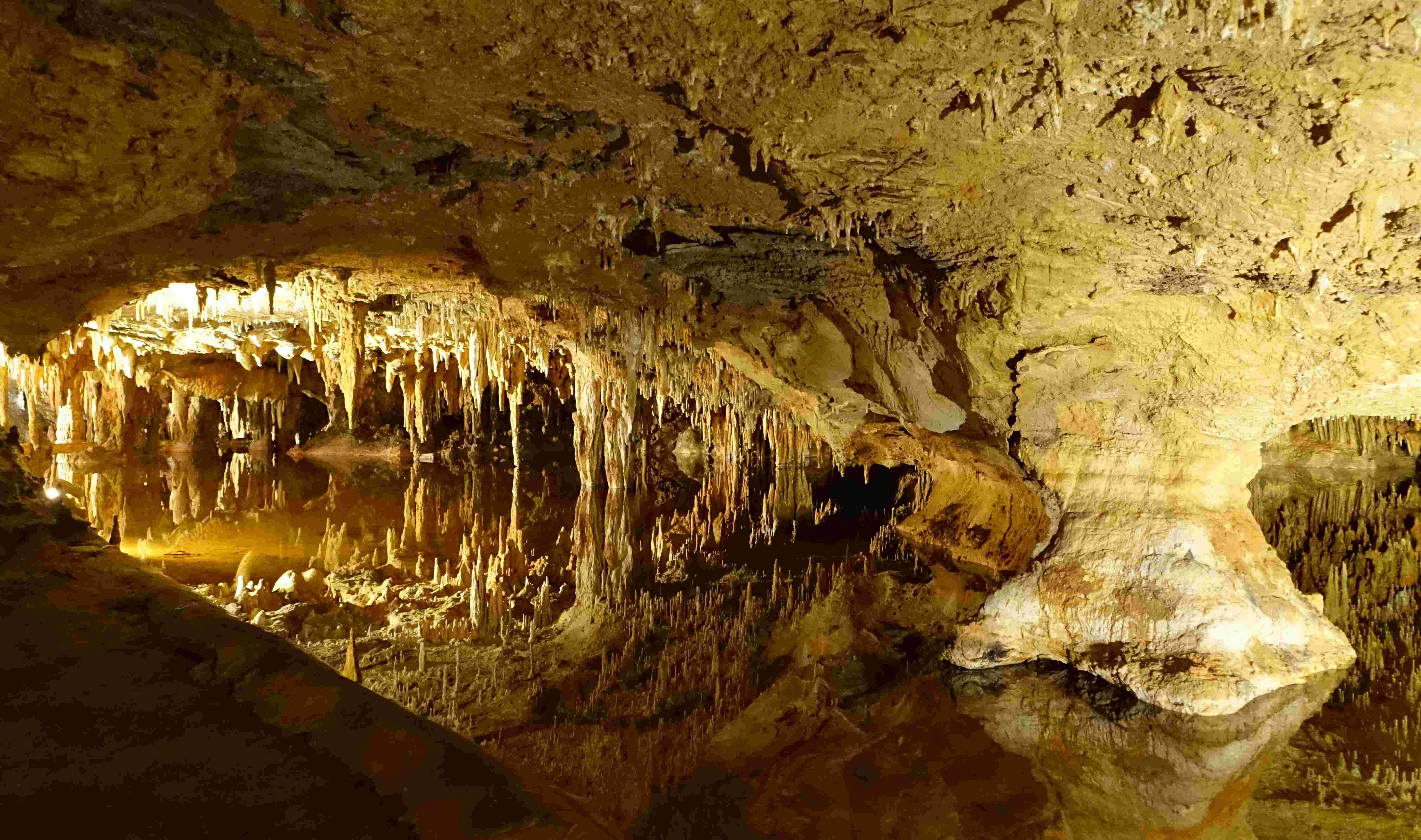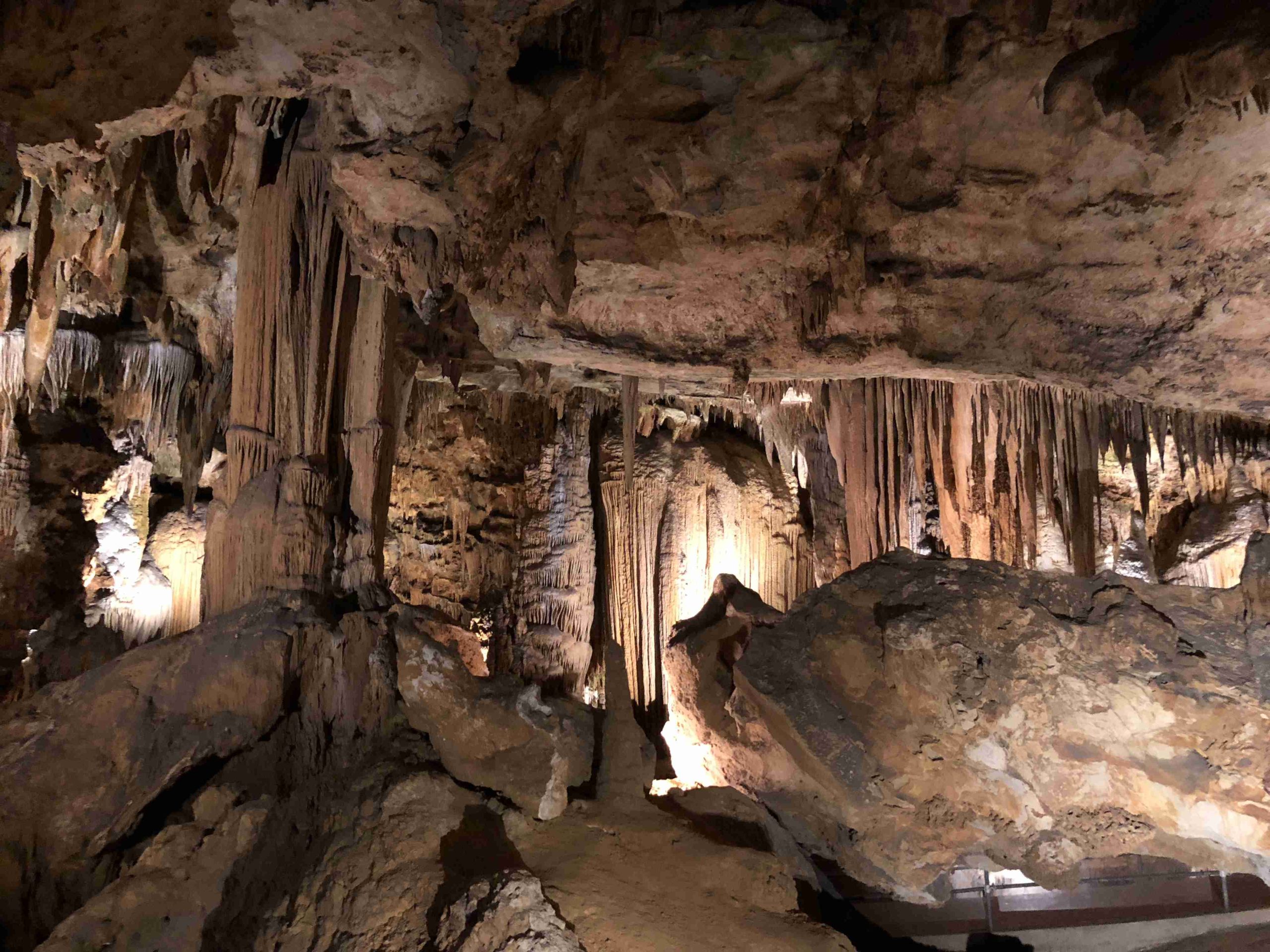Luray Caverns and Carlsbad Caverns are two of America’s most renowned underground wonders, each with its unique geological history and formation process. When comparing their ages, it’s crucial to distinguish between the age of the rock formations in which the caverns are found and the age of the caverns themselves. Luray Caverns are developed in older rock, but Carlsbad Caverns began forming earlier as actual cave systems.
What is the Geological Age of the Rock Formations?

Luray Caverns
- Located in: Lower Beekmantown Dolomite
- Age of rock: Approximately 480 million years old (Lower Ordovician period)
Carlsbad Caverns
- Located in: Capitan Reef limestone
- Age of rock: Approximately 250 million years old (Permian Period)
In terms of the rock formations, Luray Caverns are situated in significantly older rock, dating back to the Lower Ordovician period, about 480 million years ago. Carlsbad Caverns, on the other hand, are found in limestone from the Permian Period, roughly 250 million years ago.
When Did the Actual Caverns Begin to Form?

Luray Caverns
- Formation period: Tertiary period (began approximately 66 million years ago)
- Exact formation date: Not precisely determined
Carlsbad Caverns
- Estimated formation: 4 to 6 million years ago
- Formation process: Sulfuric acid dissolution
While Luray Caverns are in older rock, the caverns themselves are believed to have formed during the Tertiary period, which began about 66 million years ago. The exact date of their formation is not precisely known. Carlsbad Caverns, despite being in younger rock, began forming as cave systems earlier, with estimates placing their origin at 4 to 6 million years ago.
How Do the Formation Processes Differ?
Luray Caverns
- Formed by typical carbonic acid dissolution
- Slow, continuous process of stalactite and stalagmite formation
- Growth rate: Approximately one cubic inch every 120 years
Carlsbad Caverns
- Formed by sulfuric acid dissolution
- Rapid cave formation due to the strong acid
- Presence of gypsum deposits as evidence of the process
The formation processes of these caverns are distinctly different. Luray Caverns formed through the typical carbonic acid dissolution process, resulting in a slow, continuous formation of stalactites and stalagmites. Carlsbad Caverns, however, were carved out by sulfuric acid, a much stronger acid that led to more rapid cave formation.
What Are the Key Historical Milestones?
| Milestone | Luray Caverns | Carlsbad Caverns |
|---|---|---|
| Discovery Date | August 13, 1878 | 1898 |
| Discoverer(s) | Andrew J. Campbell, William Campbell, John Campbell, Benton Stebbins | Jim White |
| National Recognition | N/A (Privately owned) | National Monument in 1923, National Park in 1930 |
| World Heritage Status | N/A | Recognized in 1995 |
How Do Visitor Experiences Compare?
Luray Caverns
- Annual visitors: Approximately 500,000
- Tour duration: Typically 1 hour
- Unique features:
- Great Stalacpipe Organ
- Mirrored pools
- Variety of speleothems
Carlsbad Caverns
- Annual visitors: Around 700,000
- Tour options: Self-guided (several hours) or ranger-guided (varying lengths)
- Unique features:
- Bat Flight Amphitheater
- Underground Lunchroom
- Vast chambers and formations
What Archaeological Findings Have Been Made?
Luray Caverns
- Bone fragments
- Charcoal
- Flint
- 500-year-old Native American girl skeleton
Carlsbad Caverns
- Limited archaeological findings due to the nature of its formation
- Focus more on geological and paleontological discoveries
How Accessible Are These Caverns to Visitors?
Luray Caverns
- Location: 90 miles from Washington, D.C.
- Accessibility features:
- Wheelchair-accessible paths
- Elevators
- Challenges: Some stairs and uneven terrain
Carlsbad Caverns
- Location: 140 miles from El Paso, Texas; 230 miles from Albuquerque, New Mexico
- Accessibility features:
- Elevators
- Some wheelchair-accessible paths
- Challenges: 750-foot descent to main caverns
In conclusion, while Luray Caverns are situated in older rock formations, Carlsbad Caverns began forming as actual cave systems earlier. Both offer unique geological wonders and visitor experiences, each with its own set of remarkable features and historical significance.

